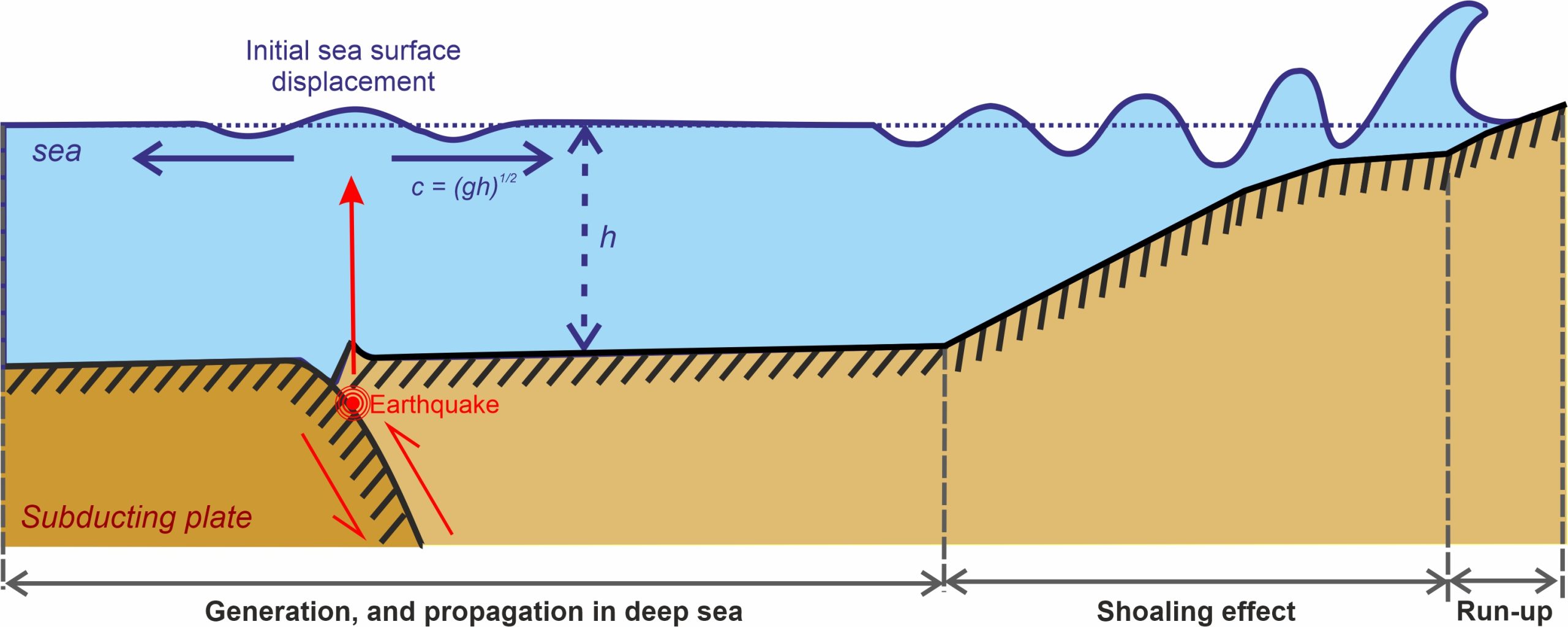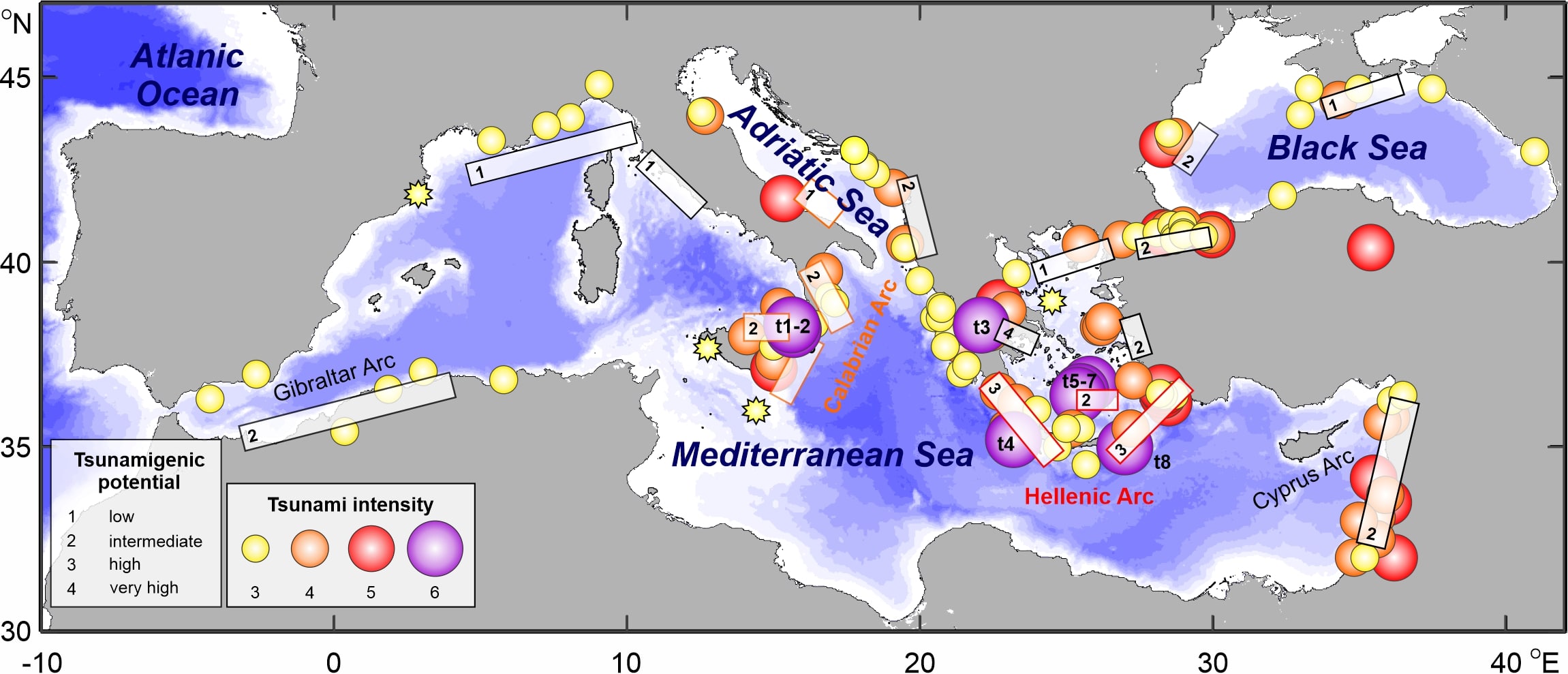tsunamis
Tsunamis are long ocean waves, with periods from minutes to hours, mainly generated by strong submarine earthquakes. In addition, tsunamis can also be generated by landslides, meteorite impacts, submarine volcanic eruptions, and meteorological processes. In this catalogue we, exclusively, list and describe those tsunamis which have seismic origin, i.e., which were generated by earthquakes or by landslides, and which were observed at the Adriatic Sea coasts. Information on the meteorological tsunamis of the Adriatic Sea can be found in the Adriatic meteotsunami catalogue.
The strongest seismic tsunamis are caused by shallow (up to 100 km depth) submarine earthquakes which displace the sea floor and which commonly occur at the boundary zone of two (or more) tectonic plates. Tectonic plates can either converge upon one another, with one plate subducting below the other, or can move horizontally past each other. The plates can also get “locked” at certain location. It is at these locations that the stress builds up. When this stress becomes too great, the plates slip horizontally or vertically, resulting with an earthquake during which a huge amount of energy is released. If this earthquake happens under the sea bottom, or near the coast, a tsunami can be generated. For a significant tsunami to be generated, an earthquake of ~7.5 magnitude has to occur, however, depending on the local geological properties, tsunamis can also be caused by weaker earthquakes (Pugh and Woodworth, 2014).

The strongest tsunamis are generated by earthquakes occurring along the subduction zones, i.e., at locations where denser ocean tectonic plates sink under lighter continental tectonic plates. Most of the World’s strongest tsunamis (71%) have been observed at the rim of the Pacific Ocean, followed (at a great distance) by the Mediterranean Sea (15%), the Carribbean Sea and the Atlantic Ocean (7%), Indian Ocean (6%), and the Black Sea (1%) (weather.gov).
The Mediterranean Sea is a location where the African and Eurasian plates converge, resulting with a significant number of tsunamis (Tinti and Maramai, 1996; Tinti et al., 2001; Papadopoulos and Papageorgiou, 2012; Papadopoulos et al., 2014, Maramai et al., 2019).




